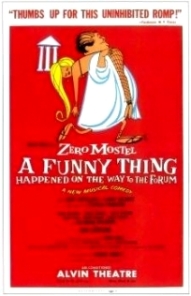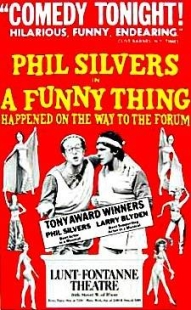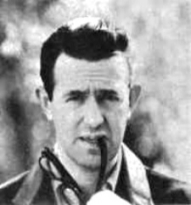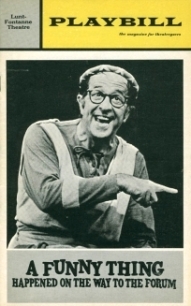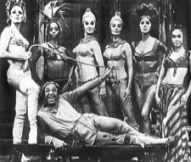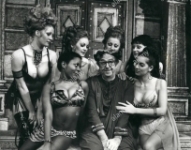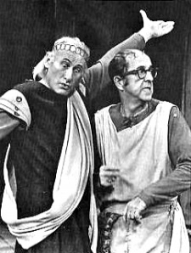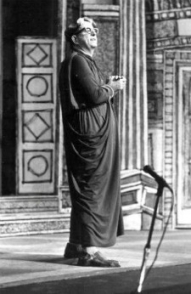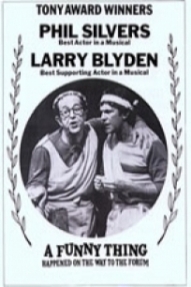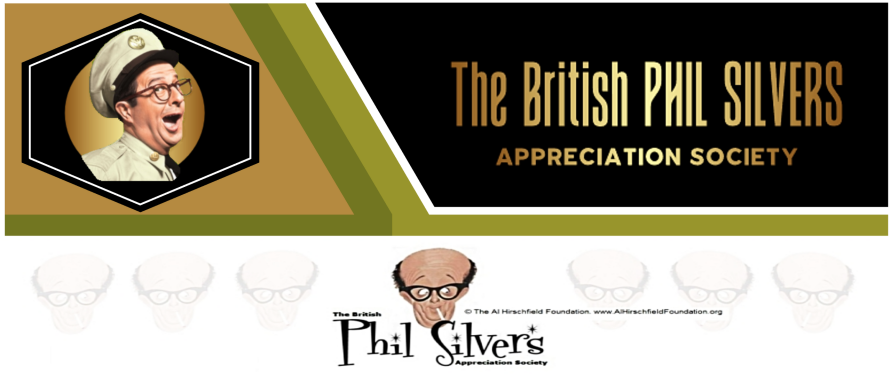Phil Silvers On Stage
Phil Silvers' greatest success came via the medium of television, but it was his stage work that played an enormous role in helping him to achieve that success. It was on stage, working in front of a live audience, that he developed, honed, crafted and polished the skills which served him in The Phil Silvers Show, and every piece of film and television work he appeared in.
By the late 1930's, Phil Silvers was already a veteran performer and had gained a reputation as one of the best comedians in the business. But he recognised that if he wanted to further his career he would eventually have to break out of the vaudeville/burlesque circuit if he wanted to reach greater audiences. He had already appeared in a couple of one and two reel pictures in Hollywood and was keen to expand his experience.
Join us as we take a look at Phil's stage career.......
Yokel Boy (1939)
Produced by......Lew Brown
Book by......Lew Brown
Music by......Lew Brown, Charles Tobias and Sam H. Stept
Lyrics by......Lew Brown, Charles Tobias and Sam H. Stept
Directed by......Lew Brown
Choreographed by......Gene Snyder
Scenic Design by......Walter Jagemann
Costume Design by......Frances Feist
Costumes Executed by......Veronica
General Manager......Leon Spachner
Stage Manager......Robert Calley
Assistant Stage Mgr......Jay Conley and Mortimer O'Brien
Buddy Ebsen as......Elmer Whipple
Judy Canova as......Judy
Charles Althoff as......Grandpa Hawkins, Mayor
Kalli Barton as......Yokel Girl
Bob Beh as......Yokel Boy
Lorraine Belore as......Lady of the Ensemble
Jeanne Bergersen as......Yokel Girl
June Blake as......Lady of the Ensemble
James L. A. Burrell as......Minute Man from Lexington
Ann Canova as......Annie
Zeke Canova as......Hank
Phil Silvers as......Punko Parks
In 1939 Phil was offered the role of a brash, fast-talking assistant producer in a production of Yokel Boy. Producer, director Lew Brown was adapating a stage version of his own book and thought Phil was perfect for the role of Punko Parks.
Although it meant taking a pay-cut Phil was astute enough to realise that it was a gamble worth taking. It would open him up to new audiences and if it paid off would open new doors for him.
The show centred on a young dancer who is discovered by an egotistical Hollywood director. The role of the dancer went to Buddy Ebsen. Buddy was a song and dance man who'd had a hugely successful stage career. Buddy had recently returned from Hollywood. He had been cast as The Tin Man in MGM's The Wizard Of Oz. Sadly, after a few days of filming Buddy suffered a terrible allergic reaction to the make-up which almost killed him.
The role of the Hollywood director was played by Jack Pearl. Pearl was a hugely popular dialect comedian of the time (his catch-phrase was "Vass you dere, Sharlie?") and had enjoyed enormous success both on stage in musical revues, and with his own radio show, The Jack Pearl Show.
Brown's script called for Pearl's character to have an assisstant. "It was a small role, but weird." recalled Phil. "A two minute scene in which he tries to seduce a girl."
Lew Brown had auditioned a number of actors for the part but felt none of them were suitable. When he heard about this young, up-and-coming firebrand comic by the name of Phil Silvers he asked him to come and read for the part.
This was the opportunity that Phil had been hoping for. With help from Buddy Ebsen, Phil ad-libbed an entire scene for Brown. Brown was more than impressed and offered Phil the part.
"The cast in that rehearsal hall laughed and Brown immediately offered me $150 a week, a come-down from my usual $275. I would have paid him for the job!" said Phil.
With rehearsals underway Phil soon realised that there was a problem. Jack Pearl was a big star and the Top Banana in this production. He felt threatened by Phil's addition to the cast and was unhappy at the possibilty that this hot-shot kid might steal the show from under his nose.
The troubled production opened for a rehearsal run in Boston. This would give them the chance to iron out any problems with the show before moving to Broadway.
Within a few short days it was obvious to both cast and crew that the show was in trouble. Jack Pearl quit the show and Lew Brown took the decision to write out Pearl's character and expand the Punko Parks role.
"And that's how the role I played for years: the aggressive, smiling, call-a-tall-man-Shorty manipulator was born." said Phil.
Yokel Boy opened at the Majestic Theatre in New York on July 6, 1939. The critics, whilst not overly kind to the show itself had nothing but praise for Phil Silvers.
Although not a major success Yokel Boy nevertheless helped Phil's career enormously. It was as a direct result of his role in the show that Phil was offered a seven-year contract at MGM by none other than Louis B. Mayer himself.
Yokel Boy closed on January 6, 1940 after a total of 208 performances.
(Interestingly, in 1942 Republic Pictures bought the film rights to Yokel Boy. They immediately started casting for a Phil Silvers-type. Phil offered to play the part. The studios turned him down. The script was re-written and Phil's role was eventually played by Eddie Foy Jnr).
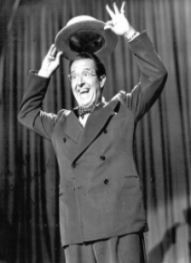
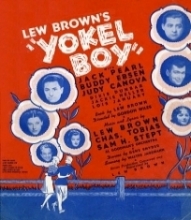
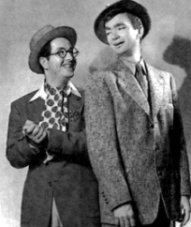
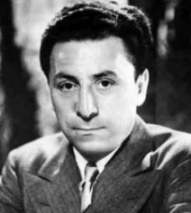
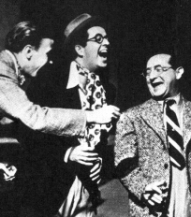
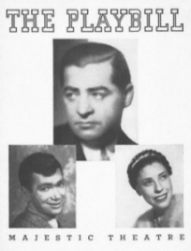
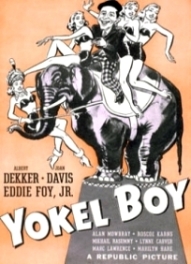
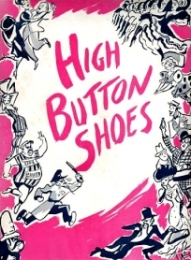
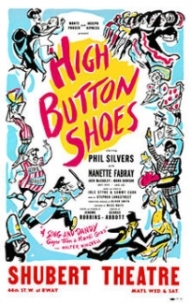
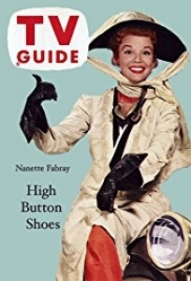
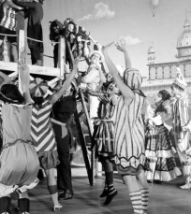
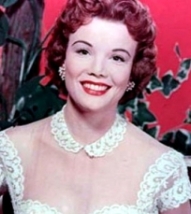
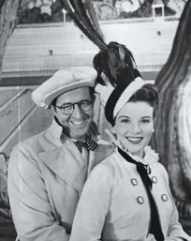
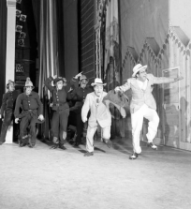
High Button Shoes (1947)
Produced by......Monte Proser and Joseph Kipness
Script by......George Abbott
Music by......Jule Styne and Sammy Cahn
Lyrics by......Jule Styne and Sammy Cahn
Based on "The Sisters Liked Them Handsome" by......Stephen Longstreet
Dance arrangements by......Genevieve Pitot
Orchestrated by......Phil Lang and Philip Lang
Vocal arrangements by......Bob Martin
Musical Director......Milton Rosenstock
Directed by......George Abbott
Choreographed by......Jerome Robbins
Scenic Design by......Oliver Smith
Costume Design by......Miles White
Lighting Design by......Peggy Clark
Nanette Fabray as......Sara Longstreet
Phil Silvers as......Harrison Floy
Mark Dawson......Hubert Ogglethorpe
Lois Lee as......Fran
Jack McCauley as......Henry Longstreet
Clay Clement as......General Longstreet
Carole Coleman as......Shirley Simpkins
William David as......Mr. Anderson
Joey Faye as......Mr. Pontdue
Nathaniel Frey as......Elmer Simpkins
Helen Gallagher as......Nancy
Tom Glennon as......Coach
Paul Godkin as......Uncle Willie
Donald Harris as......Elmer Simpkins, Jr.
The musical comedy High Button Shoes would again prove to be a series of happy accidents and coincidences that would once more develop around Phil's involvement with the show and bring him yet again the love of the audiences and the acclaim of the critics.
Writer Stephen Longstreet had written a book, The Sisters Liked Them Handsome, a delightfully charming novel based on his familiy's experiences at the turn of the century.
Composer Jule Styne had read a review of the book and thought there was enough potential to develop a musical from the project. Following a couple of draft writings and a change of title (the title High Button Shoes came from Longstreet's wife). Jule Styne approached Phil and asked if he would be interested in coming on board.
Initially Phil turned down the opportunity. He was already contracted to a radio show, The Phil Silvers Show, and didn't feel that High Button Shoes was right for him.
Jule Styne enlisted the services of George Abbott. Abbott was an experienced director who'd been involved with several hit shows including Boy Meets Girl, Pal Joey and On The Town. Having him on board virtually guaranteed a hit show. As with Yokel Boy, Phil's part had been drastically re-written and expanded and the show now centred around Harrison Floy.
"One day, somebody - I don't remember who - thought of switching the story to revolve around Harrison Floy, a flamboyant scamp with great dreams. A Bilko in spats. And now I was sucked in!" said Phil.
When rehearsals began, again echoing his experience on Yokel Boy, Phil soon realised that there were problems with the show.
"The script was not funny. Floy was dull, and my mouth got drier with every line I said." recalled Phil. " All my life I'd wanted to work under a master like George Abbott. He was a millionaire with a record of hits two arms long. How could I tell him he was wrong?"
The show finally hit the road, in Philadelphia, on September 15, 1947. The songs and the dancing were immediate hits with the audience but Phil felt that as an experienced comedian he was being reigned in by George Abbott.
"I took a personal beating from the critics. I had stuck faithfully to what Mr.Abbott asked me to do. His lines kept the plot moving cleanly and inevitably. But the critics asked, where were the laughs?" said Phil.
The show moved to the New Century Theatre, New York on October 9, 1947. During the run of the show Phil suffered a throat problem and under doctors' orders he could continue to perform in the show, but would have to maintain complete silence throughout the rest of the day.
Phil was convinced that his throat problem was a symptom of his nerves. Not being allowed to ad-lib during the show had dented his confidence. When the doctor finally gave him the all-clear he approached George Abbott and informed him "I'll be ad-libbing from now on, but always within the context of the story and the period."
To Phil's utter surprise, George Abbott gave his blessing.
Phil's sidekick in the show was played by his old friend Joey Faye. They had worked together in the early vaudeville/burlesque days. They soon began to work some of the old burlesque routines into the show. This gradual refining and polishing began to pay-off. The audiences were growing and the laughs were coming thick and fast.
Actor Tony Randall once recalled seeing Phil and Joey perform in the show. ''It was great to watch the two of them work. They stood nose to nose and talked into each other's faces. It was like a lesson in acting. They didn't play to the audience. They talked to each other. They acted.''
Finally Phil felt that the show was taking shape - great songs, energetic dance numbers and fast-paced comedy. "I kept changing and adjusting and adding to my role until finally we had what we should've had on opening night." said Phil
The critics began to take notice. "With Phil Silvers skipping through it like an old burlesque mountebank High Button Shoes is an immensely likeable musical."
Critic Brooks Atkinson wrote of Phil "He is an uproarious comic. He has the speed, the drollery and the shell-game style of a honky-tonk bufoon!"
The production moved to the Shubert Theatre on December 22, 1947. It remained there until October 18,1948 when it then transferred to the Broadway Theatre. Towards the end of its run Phil left the show after it moved to the Broadway Theatre and Joey Faye took on the role of Harrison Floy.
In all High Button Shoes ran for a total of 727 performances. The curtain came down on the show on 2 July, 1949.
Top Banana (1950)
Produced by......Paula Stone and Michael Sloane
Music by......Johnny Mercer
Lyrics by......Johnny Mercer
Book by......H.S Kraft
Vocal arrangements and direction by......Hugh Martin
Musical Director......Harold Hastings
Music orchestrated by......Don Walker
Featuring songs by......Bill Finnigan
Directed by......Jack Donohue
Choreographed by......Ron Feitcher
Scenic Design by......Jo Mielziner
Lighting Design by......Jo Mielziner
Costume Design by......Alvin Colt
Company Manager......Joe Roth
General Manager......Harry Zevin
Production Stage Manager......Fred Herbert
Stage Manager......Danny Brennan
Assistant Stage Mgr......Louis De Mangus
Phil Silvers as......Jerry Biffle
Rose Marie as......Betty Dillon
Jack Albertson. as.....Vic Davis
Bobby Scheerer/Johnny Coy as......Tommy Phelps
Dick Dana as.......Danny
Florence Baum as......Sales Girl
Marion Burke as......Model
Dean Campbell as......Announcer
Zachary A. Charles as......Russ Wiswell
Sara Dillon as......Bubble Girl
Danny Scholl as.......Cliff Lane
Herbie Faye as......Moe
Joey Faye as......Pinky
Herb Fields as......Photographer
Bradford Hatton as......Mr Parker
Betsy Holland as......Miss Pillsbury
Judy Lynn as......Sally Peters
Walter Dare Wahl as......Walter
The year was 1950 and Phil Silvers had recently divorced from his first wife, Jo-Carroll Dennison. Hy Kraft, an old friend from his days in Hollywood, had asked Phil to star in a musical he had written. The musical was titled Jest For Laughs. Once again gut-instinct told Phil that this vehicle was not suitable for him, but out of loyalty to his old friend he agreed to at least consider the offer.
"It was not for me. I just didn't get it. A great comedian meets his wife in a department store. It was pure Jack Benny. In fact that's how Jack actually met his wife, Mary!"
Hy Kraft had hired Johnny Mercer to write both the music and lyrics for the show. Mercer was an accomplished lyricist, having worked with Bing Crosby, Jerome Kern and Hoagy Carmichael. However this was his first full musical score.
Husband and wife team Paula Stone and Mike Sloane were recruited to produce the show. Although Paula came from a showbiz background neither of them had experience of producing musicals. Dancer Jack Donohue, who had directed numerous musical segments for television, was hired as the director.
Phil was perturbed. He felt the whole project was snow-balling without having the most important thing in place - the foundation of the show, the core premise.
He once recalled "Why are we doing this show? What was the justification for doing this story? There had been many stories about the tribulations of a comedian - did meeting his wife in a department store in the 1950's make it any more exciting?"
Fresh from a divorce and entering into a new decade, which would ultimately see his rise to the ultimate pinnacle of his career, Phil was blossoming from a talented comedian and performer into an artist who knew exactly what was needed in a project to bring the best out of him.
In an inspired moment Phil suggested turning the musical into a satire of the life of a TV star. In 1950 there was one star who stood heads and shoulders above all others, the King Of Television himself, Milton Berle. "I knew every flip gesture of Berle's, every ruthless smile." said Phil. "Milton was, shall I say, an impatient man. He had to have laughs and he didn't care where or how he found them!"
The original storyline of Jest For Laughs was jettisoned and Hy Kraft quickly rewrote the show, which now centred on the character of Jerry Biffle. The original script had a heavy burlesque flavour which, on Phil's suggestion, Kraft kept in the new script. Phil suggested a new title for the show, Top Banana.
To this day Phil is credited with creating the terminology. "Top Banana was never used in burlesque to my knowledge. Comics often referred to themselves as First Banana, Second Banana and Third Banana. I thought Top Banana kept that burlesque feel. Johnny Mercer felt it sounded better. So Top Banana it was!"
Phil sought help from some old friends, people who were familiar with the burlesque routines that featured in the show. Joey Faye, Herbie Faye and Jack Albertson who had all worked with Phil in the vaudeville/burlesque days were hired for the show.
Rose Marie, a former child star who'd enjoyed early stardom as Baby Rose Marie, was hired to play the female lead, Betty Dillon. "He was a very loving man. He wanted to be loved and he had a lot of love to give!" she recalled. "One night, whilst we were doing a duet in the show, he broke into an English accent Not to be outdone I followed him. By then the musicians in the orchestra pit were reading comic books and just waiting for their cues!"
After extensive rehearsals the show went on a brief tryout initially to Boston and then on to Philadelphia. This was the usual practice for major productions like this. "Rehearsals are fine." said Phil "But you only really get to know the timing, the pacing, the phrasing of a gag, a line if you have an audience to bounce off!"
Top Banana opened at Broadway's Winter Garden Theatre on November 1, 1951. The show was an instant hit. Leading critic Brooks Atkinson, who'd been so supportive of Phil during High Button Shoes, once again sang his praises. "In Top Banana, Mr. Silvers is completely hilarious, throwing gags helter skelter at high-speed and running through some uproarious burlesque routines!"
Once again Phil Silvers was the darling of the Broadway audiences and the critics. "For a role that started out as a minor subplot, it turned out very handsomely." said Phil. " Jerry Biffle won me every award the theatre offered a male star in a musical - Tony, Variety, Billboard, New York Drama Critics Circle, Donaldson, Sylvania. I think Berle felt he should have had some award too!"
The show closed on October 4, 1952, after a total of 350 performances. The show then went on an extensive tour of the United States, culminating in Los Angeles in late 1953.
With just a few weeks before the production closed Phil was approached by promoter Joe Justman. Justman, who also operated a film production centre, was interested in filming Top Banana.
The film was shot in one and a half days on a less-than-shoe-string budget. Justman filmed what was basically a recreation of the stage show in a tacky 3-D process. Sadly by the time the film was released in 1954 the 3-D craze was over and cinemas had to run the film on regular theatre projectors, which made the film look garish.
Phil tried to salvage what business he could for the film by doing personal promotions and appearances but to no avail. "Top Banana is occasionally shown on TV. With all its out-of-synch sound, inexplicable noises, scenes that seem to float underwater, it's now avant-garde" said Phil.
In 1964 Top Banana was revived for a two-week run as part of the Dallas Summer Musicals season. Phil recreated the role of Jerry Biffle, alongside his old cohorts Herbie Faye and Joey Faye. Sherry O'Neill was the female lead.
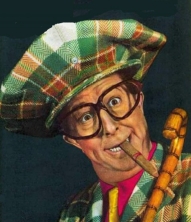
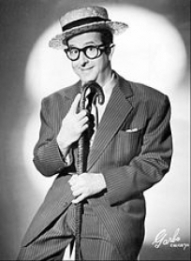
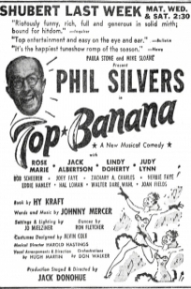
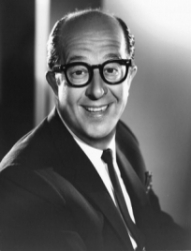
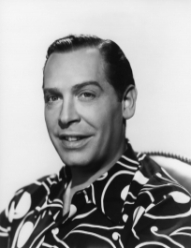
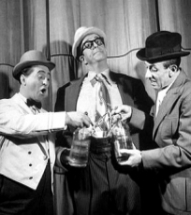
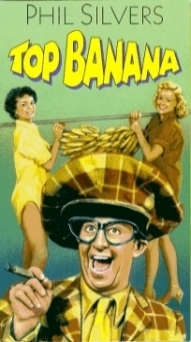
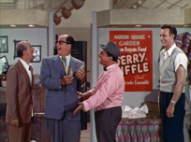
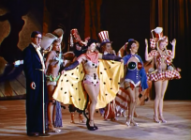
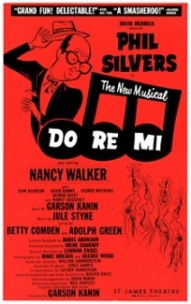
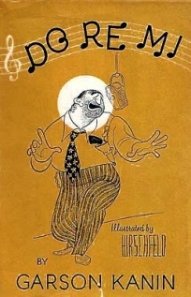
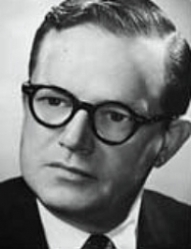
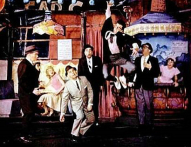
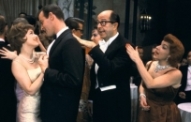
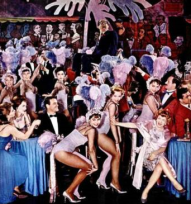
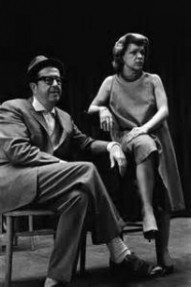
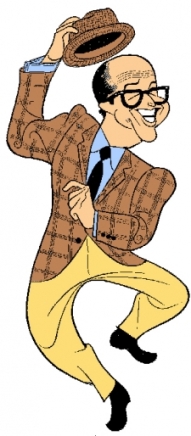
Do Re Mi (1960)
Produced by......David Merrick
Associate Producer......Jones Harris
Book by......Garson Kanin
Music by......Jule Styne
Lyrics by......Betty Comden and Adolph Green
Musical Director......Lehman Engel
Music orchestrated by......Luther Henderson
Vocal arrangements and vocal direction by......Buster Davis
Dance arrangements by......David Baker
Directed by......Garson Kanin
Choreographed by......Marc Breaux and Deedee Wood
Associate Director......William Hammerstein
Scenic Design by......Boris Aronson
Costume Design by......Irene Sharaff
Coiffures by......Michel Kazan
Assistant to Mr. Aronson......Ming Cho Lee and Lisa Jalowetz
Lighting Design by......Al Alloy
Assistant to Miss Sharaff......Florence Klotz
Theatre sound and acoustical facilities engineered by......Richard H. Ranger
Phil Silvers as........Hubie Cram
Nancy Walker as........Kay Cram
David Burns as........Brains Berman
Nancy Dussault as........Tilda Mullen
George Givot as........Skin Demopoulos
George Matthews as......Fatso O'Rear
John Reardon as........John Henry Wheeler
Chad Block as........James Russell Lowell, IV
Marilyn Child as.........Thelma Berman
David Gold as........The Interviewer
Edward Grace as........Senator Redfield
Stuart Hodes as........The Photographer
Marc Jordan. as.......The Headwaiter, Fatso's Lawyer
Al Lewis as........Moe Shtarker
Albert Linville as........The Recording Engineer, Senator Rogers
Al Nesor as........Wolfie
Standby........Bernie West (Hubert Cram)
Understudies: David Gold (James Russell Lowell, IV), Marc Jordan (Wolfie),Patti Karr (Kay Cram), Al Lewis (Fatso O'Rear), Jim Marley (Brains Berman,Moe Shtarker), Al Nesor (Skin Demopoulos), Dawn Nickerson (Tilda Mullen)
When Phil Silvers was offered the lead role in the forthcoming production of A Funny Thing Happened On The Way To The Forum, he turned the project down.
Larry Gelbart had written the show specifically for Phil. However, Phil had serious reservations about the project. "I'd only just finished on television as Bilko. When I saw the script it came across as Bilko in a toga! Between the script and Stephen's (Sondheim) songs I didn't think it had legs."
Around the same time, Phil's old friend and poker buddy, Jule Styne, had been collaborating with writer/director Garson Kanin on a musical called Do Re Mi. The musical was based on Kanin's own 1955 novella, illustrated by the great Hirschfield, about a group of ageing mobsters who branch out into the pop music business.
British-born Styne had written his first Broadway score in 1947 for Phil's hit show High Button Shoes. He'd enjoyed success with projects such as Gentlemen Prefer Blondes (1949), Bells Are Ringing (1956) and Gypsy (1959). He began collaborating on Do Re Mi with the celebrated partnership of lyricists Betty Comden and Adolph Green, with whom he had previously worked with on Stynes's 1956 musical, Bells Are Ringing.
Garson Kanin was keen to have his old friend Phil on board for the role of the Runyon-esque Hubie Cram. Cram was a minor-league con man who decides to go straight by going into the music promotion business. (The plot was also used in the 1956 musical comedy The Girl Can't Help It starring Jayne Mansfield).
Cram recruits his old friends Fatso O'Rear, Brains Berman and Skin Demopoulos. An opportunity arises which lets them side-step into the music business by renting out juke-boxes. Cram discovers an innocent young singer, Tilda Mullen, and realises she could be a star-in-the-making.
Phil felt the show had promise. "I'd been around long enough to know what was right for me as an actor and a performer. I knew this Hubie Cram inside out. I'd also known Jule, Garson, Betty and Adolph a long time...I felt safe in their hands. When I found out that Nancy Walker was on board I was sold." Phil passed on the Forum project and committed himself to Do Re Mi.
Nancy Walker was a popular actress and comedienne who had made her Broadway debut in Best Foot Forward in 1941. She had previously worked with Phil in the 1954 film Lucky Me. "I liked Nancy," said Phil, "A tough little cookie who knew how to belt out a line like the best of them".
Rehearsals were not the plain sailing that Phil hoped for. "Rehearsals became more like a civil war than theatre." said Phil. "Jule Styne would order costumes and Comden and Green would infringe on Garson's directions to the actors."
After a series of try-outs - something Phil enjoyed enormously, "It let me feel the show out - what bits of business I could do and where!", the show opened at the Colonial Theatre in Boston.
It was an old, traditional theatre ill-equipped to handle the demands of a large fast-paced show. There were problems with both the scenery and the curtains. "The second-act curtain went up but not all the way - about two thirds." said Phil.
"As the curtain came down, I was sure we were dead in the water." remarked Phil. "But the critics were kind. They saw the potential."
The show debuted on Broadway on 26 December at the St James' Theatre. The reviews were positive. One critic wrote: "To watch Mr Silvers make for the portals like a drum majorette who has lately taken to marijuana is - quite simply - to live again!"
Actor and cast member Stuart Hodes, who had a role in the show as a photographer, recalls, "The recording studio and night club scenes called for on stage orchestras. Director, Garson Kanin, wanted them to be real and asked which chorus singers and dancers played instruments, adding that they'd join the Musicians Union, play onstage, and be paid extra. He lined up clarinets, trumpet, piano, trombone, bass, and me on violin. When the extra pay fell through we were mad as hell but not surprised."
It was during the run of the show that Phil became a proud father again. This time Phil and wife Evelyn became the proud parents of twins, Cathy and Candace Silvers.
In late 1961 Phil learned that the show was being transferred to the smaller 54th Street Theatre, in New York. Phil was extremely upset by the decision. "My contract specified that the show could not be moved to a theatre with a smaller seating capacity." he said. "The 54th Street Theatre was far out of the theatre district. A jinx house." Phil was vehemently against moving the show. He loved playing Hubie Cram, "It was a lovely show and one of my favourite roles." For the sake of the production and the other actors he reluctantly agreed to idea.
In return for agreeing to the move, Phil's percentage of the show was increased. But he was not happy. "The move killed the show. Business dropped off. We closed on January 13, 1962 after 400 performances, enough to label it a hit. It could have run on and on."
(A UK production of the show, starring Max Bygraves, opened in London's West End in October of 1961. It ran for a total of 169 performances. The show was also revived as a concert performance starring Nathan Lane at New York's City Center in 1999. The 42nd Street Moon theatre company of San Francisco, California also mounted a production of the show in 2001.)
Les Poupees de Paris (1962)
Following a national tour of DO RE MI in 1962 Phil embarked upon a rather unusual project for Sid and Marty Krofft. They were puppeteers who had enjoyed a successful career on stage in both America and Europe throughout the 1950s.
Sid Krofft had an idea to create a show using his puppets but for adults only, complete with music, comedy, horror, celebrities and even topless puppets.
The Krofft's were approached to develop a puppet show as an attraction for a new club.
The resulting show, was called Les Poupees de Paris (The Dolls of Paris), and was modeled after the revues at Paris' Lido and Folies Bergere .
The show opened at The Gilded Rafters theatre in the San Fernando Valley, California in October 1961.
Several of the puppets were modeled after celebrities. During their career The Krofts had been the opening act for celebrities such as Judy Garland and Sammy Davis Jr. As a result they were able to persuade many celebrities to record voices for their puppets.
Contributors included Bing Crosby, Milton Berle, Cyd Charisse, Gene Kelly, Liberace, Jayne Mansfield, Tony Martin, and Phil Silvers.
Phil Silvers featured on one number called The Circus, which he performed with Tony Martin. Phil played the part of The Barker.
The show was a huge success, and became a key attraction at World's Fair in Seattle in 1962, and then later at the World's Fair, New York in 1964-1965. The lavish production cost over $200,000 to produce, the elaborate sets took three months to install and included a revolving theatre, elevators, an ice-skating rink and waterfall .
In 1964 Greg Garrison, producer of The Dean Martin Show, saw a performance of Les Poupees de Paris at the New York World's Fair and offered the Kroffts the chance to create a puppet segment on Martin's show that captured the essence of Les Poupees de Paris.
It was the Krofft's first break into television, but it was to be a short-lived debut. They were fired after 8 show because Dean Martin felt he was being upstaged by the puppets.
Les Poupees de Paris toured the US for much of the rest of the 1960's enjoying great success. A soundtrack album of the show was released on RCA Records in 1965. By the end of the decade it was estimated that the show had been seen by over nine million people.
The Krofft's returned to television and enjoyed great success with shows like H R Pufnstuf (1969), Lidsville (1971), Land Of the Lost (1974) and The Krofft Supershow (1976).
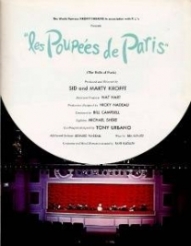
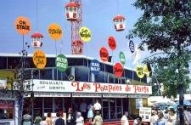
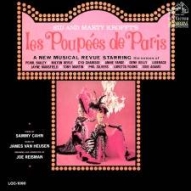
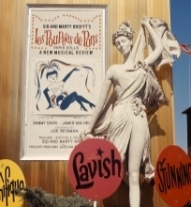
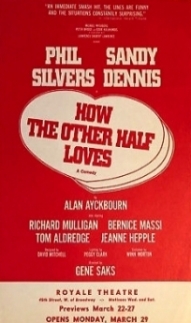
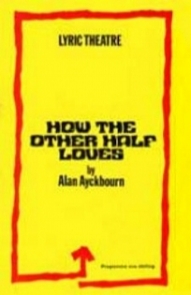
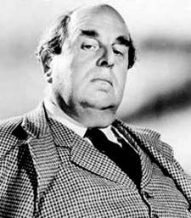
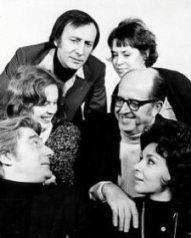
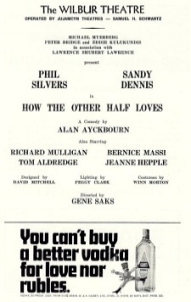
How The Other Half Loves (1970)
Produced by....Michael Myerberg, Peter Bridge and Eddie Kulukundis
Written by....Alan Ayckbourn
Directed by....Gene Saks
Scenic Design by....David Mitchell
Costume Design by....Winn Morton
Lighting Design by....Peggy Clark
Phil Silvers as........Frank Foster
Sandy Dennis as........Teresa Phillips
Richard Mulligan as........Bob Phillips
Tom Aldredge as........William Detweiler
Jeanne Hepple as........Mary Detweiler
Bernice Massi as........Fiona Foster
The year was 1967, and playwright Alan Ayckbourn's Relatively Speaking had opened to great success in London’s West End. Both audience and critics were wowed by the play and this lead to great interest in Ayckbourn's next project How The Other Half Loves, which would open in London some three years later. It would serve to prove that Alan Ayckbourn was a gifted writer who had the makings of a great playwright.
How The Other Half Loves debuted in Scarborough. at the Library Theatre on July 31, 1969. In 1970 the production opened at the Phoenix Theatre in Leicester as a try-out for the West End opening.
It was determined, by producer Peter Bridge, that the London production would need at least one big name in order to draw in the audiences. Bridge was interested in one actor in particular, Robert Morley. Morley was an extremely popular actor who had found fame both on screen and stage and whose presence in a play was guaranteed to draw in the audiences.
Morley expressed an interest on condition that certain changes were made to the script. Although Ayckbourn was unhappy at some of the changes made to his play, as a still relative newcomer he recognised the need to sacrifice certain principals in order to establish his name as a leading playwright. “Eighty per cent of the audience had paid to see Robert Morley, and I, as an unknown dramatist, had really no right to stand between that process if I wanted to take the money.”said Ayckbourn.
The success of the West End production soon proved attractive to American management agencies and producer Peter Bridge was quick to capitalise on this and plans for an American production came together considerably quicker than the London one.The American version would run concurrently with the West End version.
By a curious twist of fate, Phil Silvers and Robert Morley were friends. Morley had seen Phil performing in burlesque and Phil, being a confirmed life-long Anglophile was a great admirer of Morley's and they had met several times over the years and developed a great friendship.
Phil Silvers was hired to play Frank Foster with Gene Saks directing the play. Saks decided to relocate the action to America and asked Ayckbourn to Americanise the script. As a result Ayckbourn was closely involved with the production and flew over to work with Saks.
“With Gene Saks’ advice I Americanised the script myself. It didn’t help the play, in retrospect…. So the version was an unhappy compromise in many ways, although it worked, up to a point. The plot was the strong thing, and the machinations of that, and that certainly worked.” said Ayckbourn.
Recalling the news that Phil was to play Frank Foster, Alan Aykcbourn stated in a recent interview, “He had disappeared for a bit: he hadn’t been in the public eye. Sgt. Bilko he was still well loved for, and he’d got one or two Broadway successes like Top Banana under his belt, but that was some time ago; and nobody knew much about him. We found out about Phil that he was (a) an extremely nervous man and (b) an extremely nice man. But he’d some form of nervous breakdown; he’d had - what can I call it? - a relapse, anyway. His marriage had broken up and it had upset him enormously… Anyway, he saw in this a chance - and I think everyone saw in it a chance for him - to reconsitute himself. But it was a bit therapeutic, like all these occasions.”
And so Phil returned to the stage some 10 years after his last appearnce in Do Re Mi. It was something of a departure for Phil too. All his previous stage vehicles had been musical comedies. How The Other Half Loves was almost a straight acting vehicle for Phil.
"How The Other Half Loves was my first Broadway show in ten years, and my first show ever without music." said Phil. Following a try-out in Boston inearly March, the play opened on Broadway at the Royale Theatre on 29 March 1971 and received a mixed critical reaction.
On reviewing the play, critic Clive Barnes had nothing but praise for Phil. "The remarkable Mr. Silvers.....his performance has style, pace and assurance." But many of New York's critics were damning of the show, saying they found it "grimly frantic....singularly heavy-handed."
Sadly the audiences agreed with the critics, initial interest in Phil Silvers' return to the Broadway stage gave way to indifference to the play itself. How The Other Half Loves eventually ran for a total of 108 performances and finally closed on 26 June, 1971. Although it failed to repeat the success of the UK production it was succesful enough to make Alan Ayckbourn's name familiar to New York audiences and served to revive Phil's career.
A Funny Thing Happened On The Way To The Forum (1971)
Produced by........David Black and Larry Blyden
Music and Lyrics by........Stephen Sondheim
Book by........Burt Shrevelove and Larry Gelbart
Musical & Vocal Direction by......Milton Rosenstock/Broadway Producion
Orchestration by........Irwin Kostal and Sid Ramin
Directed by........Burt Shrevelove
Choreography by........Ralph Beaumont
Scenic Design by........James Trittipo
Costume Design by........Noel Taylor
Phil Silvers as........Prologus/Pseudolus
Carl Ballantine as........Lycus
Larry Blyden as........Hysterium
Pamela Hall as........Philia
John Hansen as.........Hero
Carl Lindstrom as........Miles Gloriosus
Lew Parker as.........Senex
Lizabeth Pritchett as........Domina
Chad Block as........Protean
Sonja Haney as........Geminae
Keita Keita as........Vibrata
Lauren Lucas as........Tintinabula
Trish Mahoney.......Geminae
Gloria Mills as........Panacia
Reginald Owen as.......Erronius
Joe Ross as........Protean
Charlene Ryan as........Gymnasia
Bill Starr as.........Protean
The year was 1960, and Phil Silvers had just committed himself to a new Broadway musical, Do Re Mi. He had turned down the role of Pseudolous in the Stephen Sondheim/Larry Gelbart musical A Funny Thing Happened On The Way To The Forum.
Gelbart had written the show specifically for Phil, but Phil had major reservations about the project. "I'd only just finished a four year hitch as Bilko. When I saw the script it read like Bilko in a toga! Between the script and Stephen's songs I didn't think it had legs."
Forum eventually hit the stage in 1962, starring Zero Mostel in the role written for Phil Silvers. The show was a smash-hit and ran from 1962 to 1964 with a total of 964 performances, winning five Tony awards in the process (including Best Musical and Best Actor - for Zero Mostel).
Fast forward to 1971. Frank Levy, an ambitious young agent at CMA hit upon the idea of reviving Forum but this time starring the man whoim the authors had originally asked to star in the production. Stephen Sondheim and Larry Gelbart were approached on Levy's behest by Larry Blyden, to mount a revival of Forum on Broadway. This time Phil was a little more receptive to the offer of playing the lead role in the show.
Blyden, was a Broadway star, TV actor and a game show host and it was his concerted efforts that ensured the success of this new prodution of Forum. In fact it was Blyden who helped raise the backing to mount the production.
"They asked me to do the show. I'd seen the success Zero had enjoyed. I'd played in the movie, so I knew it was a good show. The only problem was I'd been away from musicals since Do Re Mi - a lifetime ago." said Phil. "I was hooked alright, but years of pulsations, hot sweats and depression had made me apprehensive."
However it was Phil's nature as a gambler which ultimately inspired him to take a chance on Forum. In a 1972 interview Phil said, "I'm a compulsive gambler, but I gave up gambling in Las Vegas to gamble on Broadway, and I promise you this time I'm gonna win!."
The show debuted in Los Angeles, at the Ahmanson Theatre, on October 13, 1971. After eight preview shows the odds didn't look good. The production was blighted by problems. Several reviewers took great pains to point out that they thought Phil had lost his edge. Fellow performer and assistant producer Larry Blyden said "Everyone was disenchanted with Phil. They all said that he was shot, his timing was gone. Well that opinion came from people who haven't the vaguest notion how talent functions. Some players take a long time to get into a role."
Like the proverbial Phoenix rising from the ashes, Phil quickly settled into the role and within weeks news got around that Phil Silvers was a hot ticket again. The show reunited Phil with his old Do Re Mi co-star Nancy Walker who signed to play Domina for the Los Angeles run. Two songs were removed from the original score and replaced with two new numbers. Farewell, which was written especially for Nancy Walker, replaced Pretty Little Picture, whilst Echo Song replaced That'll Show Him.
The show ran for a total of 47 performances and closed on November 20, 1971. Following a brief run in Chicago in February the show opened at the Lunt-Fontanne Theatre on Broadway on April 4, 1972. Nancy Walker left the production, as she did not wish to tour ,and was replaced by Lizabeth Pritchard as Domina and Lauren Lucas replaced Ann Jillian as Tintinabula.
The reviews for the show and particularly Phil, were superb. "Mr Silvers is a total delight. There is a new light that has brightened up Broadway." said Clive Barnes of The Times. "Silvers is at his superb best." said Variety, and Walter Kerr of The New York Times declared "Phil Silvers is a national treasure."
Night after night Phil and the cast wowed the audiences. The box office takings were through the roof. Finally came word that the show was eligible for entry into the 1972 Tony Awards.
"They have an emotional hold on everyone on the stage because they are decided by your peers." said Phil. "After I was nominated for Best Actor in a Musical, I instinctively knew I'd win. This is no conceit. I just knew."
His instincts proved true and on 23 April 1972 Phil won the prestigious Tony Award for Best Actor In A Musical. His co-star Larry Blyden won the award for Best Supporting Actor In A Musical.
The event was televised live. Phil was more excited about Blyden's award than his own. "This sent me off on a cloud of exhilaration." said Phil. "He had worked so hard getting us there and now he won his own Tony!."
As he reached the podium to accept his own award Phil began to rave about Larry Blyden's award. As a result he went way over time in his acceptance speech. "I went into a hysterical, happy routine, forgetting it was a coast-to-coast broadcast, limited to a certain time." As a result of Phil's over-exhuberance all future acceptance speeches at awards ceremonies were rigidly timed.....all because of the night they couldn't shut Phil Silvers up.
As the recognition and plaudits rolled in Phil basked once again in the glory of the critics, his peers and the enthusiastic audiences. In his own words, "The Top Banana returns." By day he enjoyed the trappings of his success, good hotels, great food, Turkish baths, walks in Central Park and the odd game of pinochle at his beloved Friars Club. By night he exploded onto stage with all the furious energy of his burlesque days.
"It was probably the best year of my life and I looked forward to the fall. If we could hold out until August I knew business would build in 1973. I never expected it to be my fall!."
It was July 31st when Phil was taken ill. He was rushed to the emergency room at St. Clare's Hospital in New York. A cardiogram proved inconclusive. Phil was transferred to the intensive care unit. The following day he suffered a stroke. Thankfully, the precautionary medication he had received during his hospital stay had helped reduce the severity of the stroke.
Nevertheless it was severe enough to result in the temporary loss of the use of his arms and legs. Specialists were on hand to assure Phil that his brain function was not affected by the stroke. With intensive therapy they assured him he would make a good recovery.
Of course, the loss of it's main star had a terrible effect on Forum. John Bentley temporarily filled in for Phil. When it became apparent that Phil would not be able to return to the production, the producers hired Tom Poston, who had appeared with Phil in The Phil Silvers Show, to take over the lead role. Sadly, Poston simpy did not have the box office pulling power of Phil Silvers and the show was cancelled.
Following an intensive course of physical therapy Phil regained the use of his limbs and was certified fit enough to return to work. In 1973 he embarked upon a lengthy tour of the UK and Ireland in a touring production of Forum. Once again his beloved English audiences took him to their hearts.
"I hadn't realized it had played here before. I probably wouldn't have taken it if I had. But out they came to see me. They'd helped make me a hit as Bilko and here they were again. All my life I'd been an Anglophile and my English fans didn't let me down."
